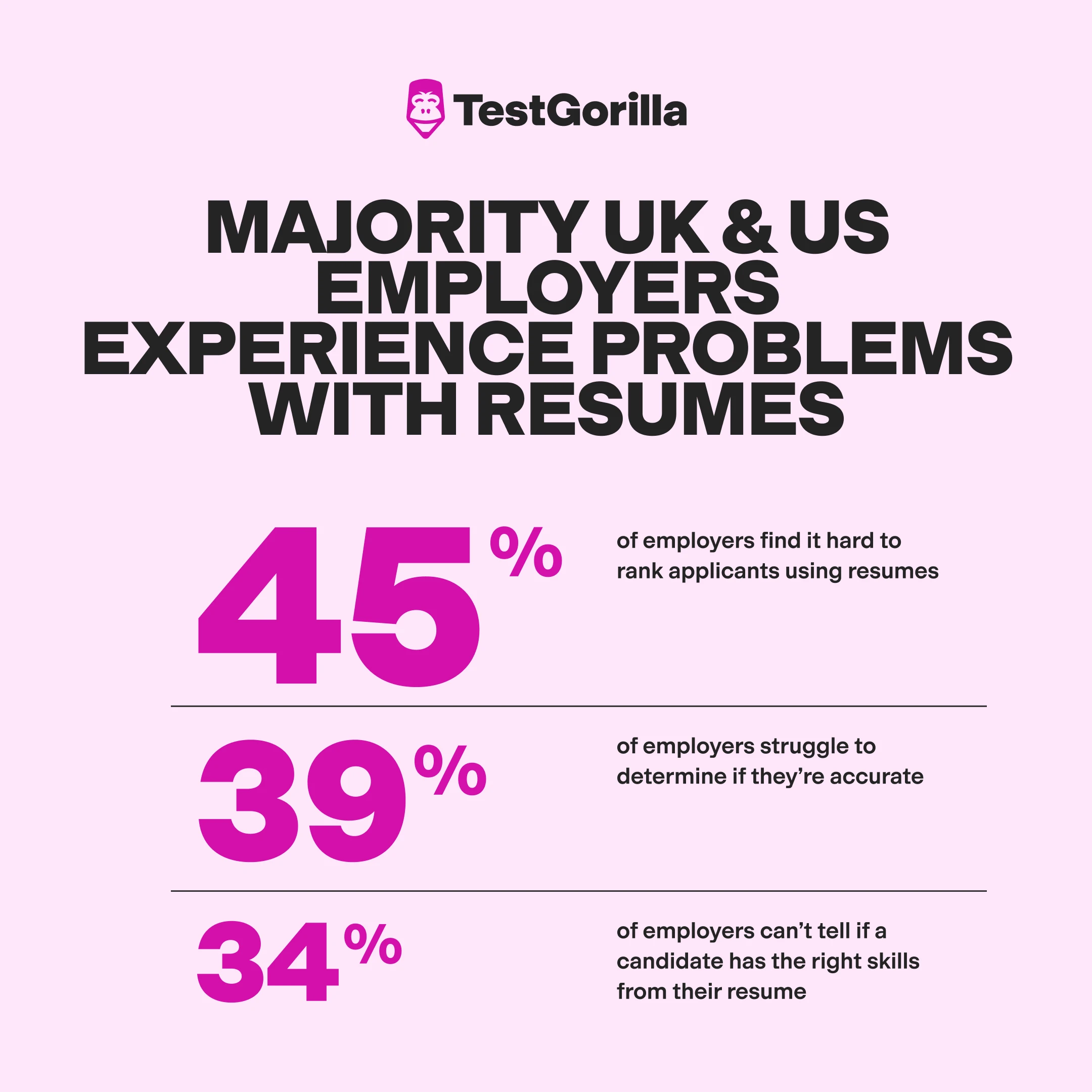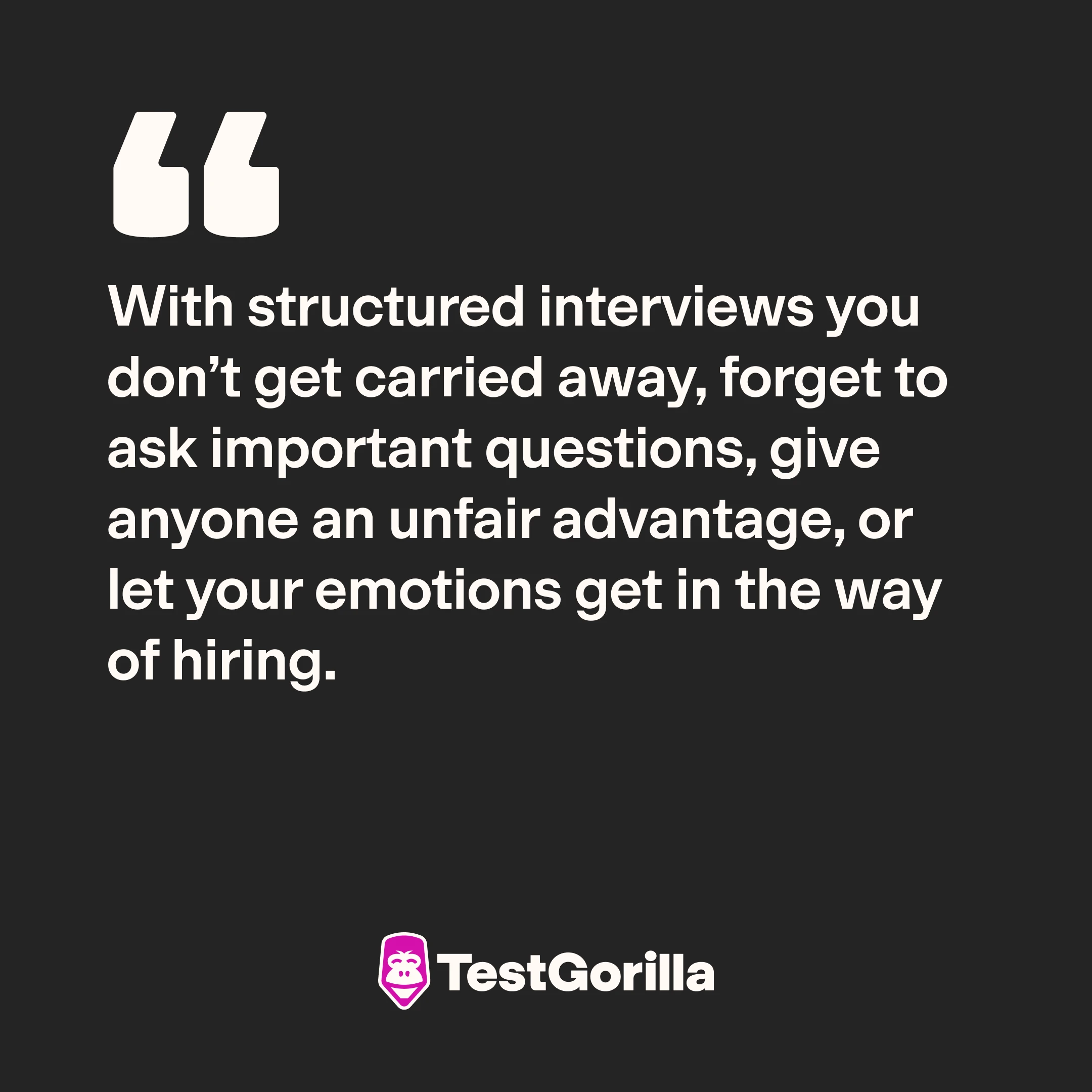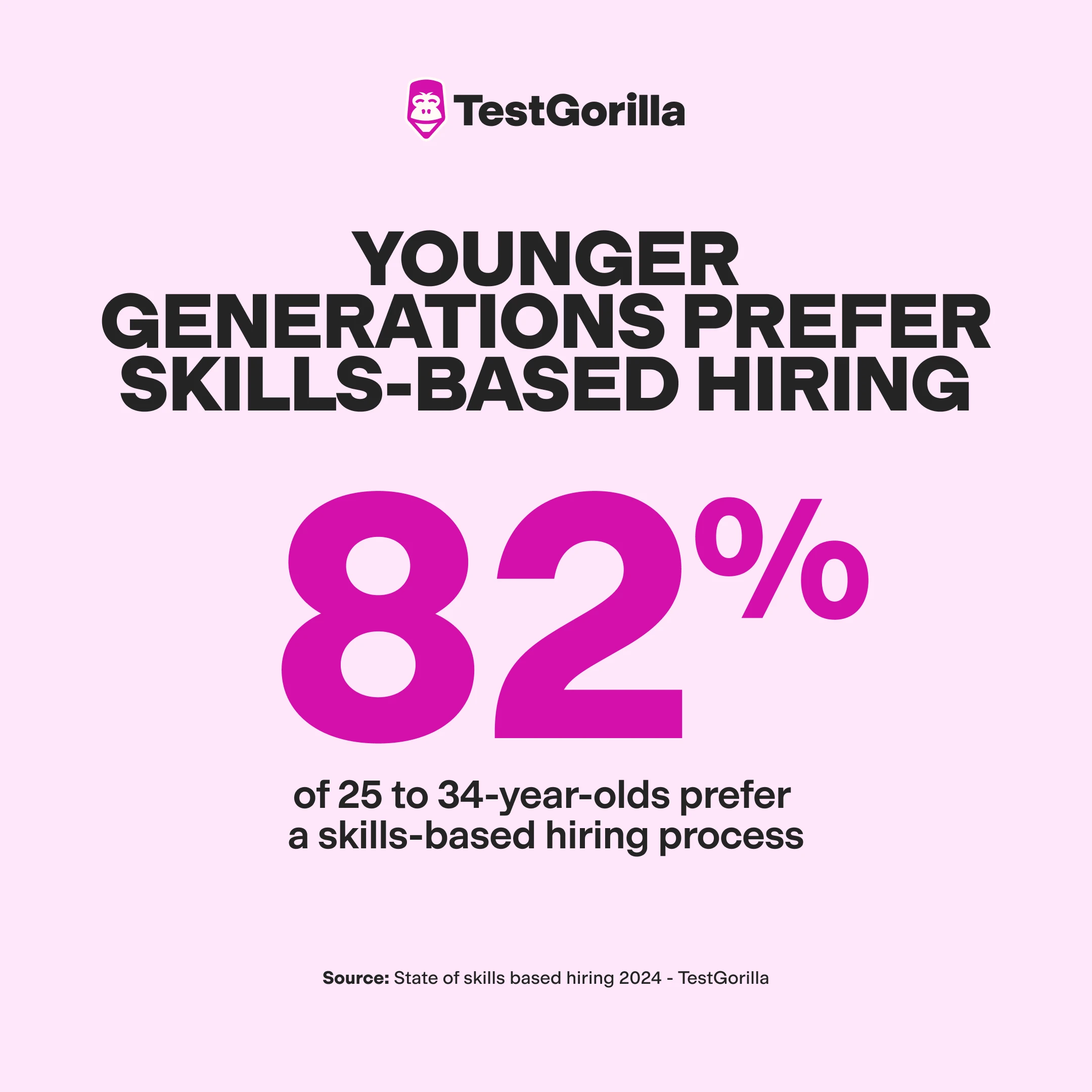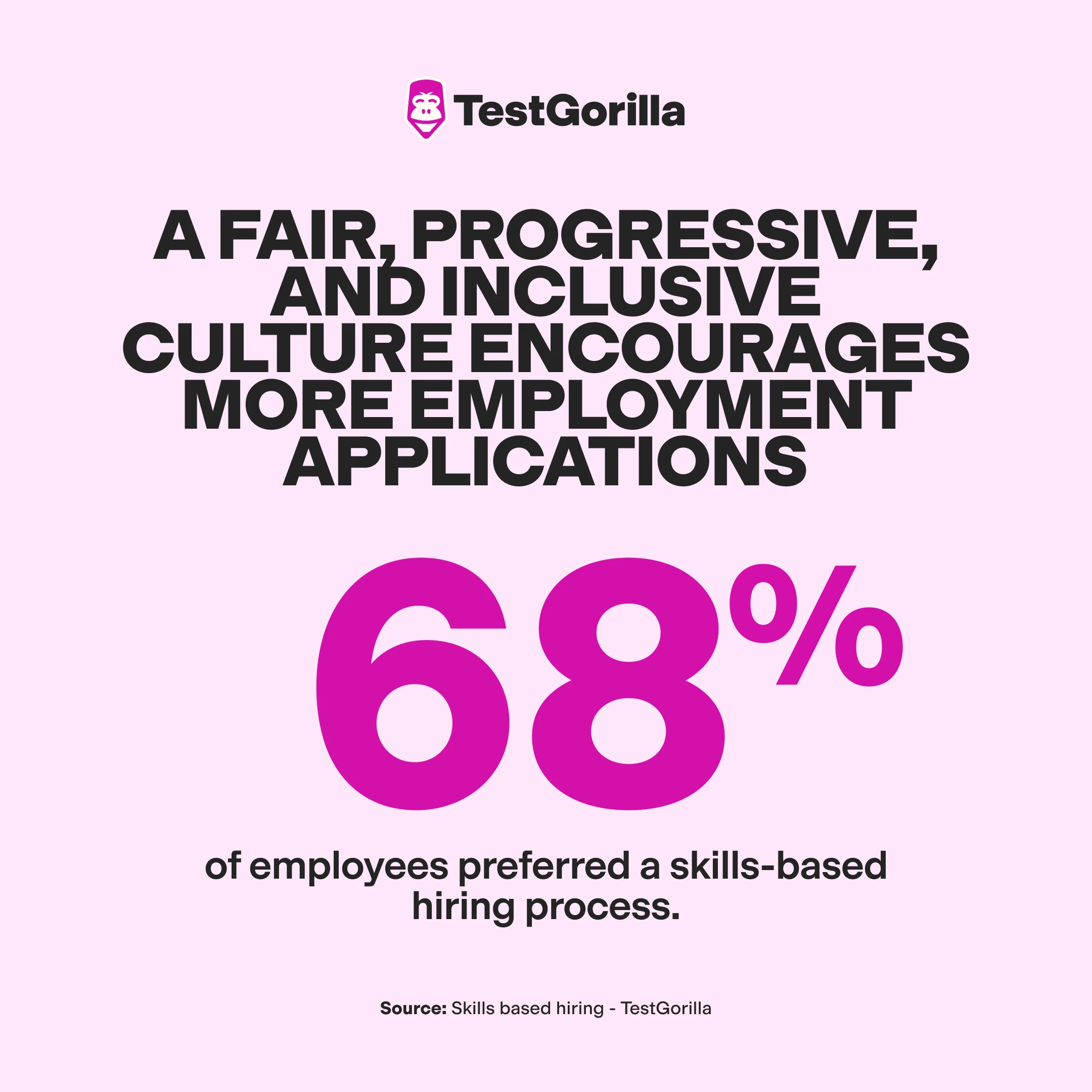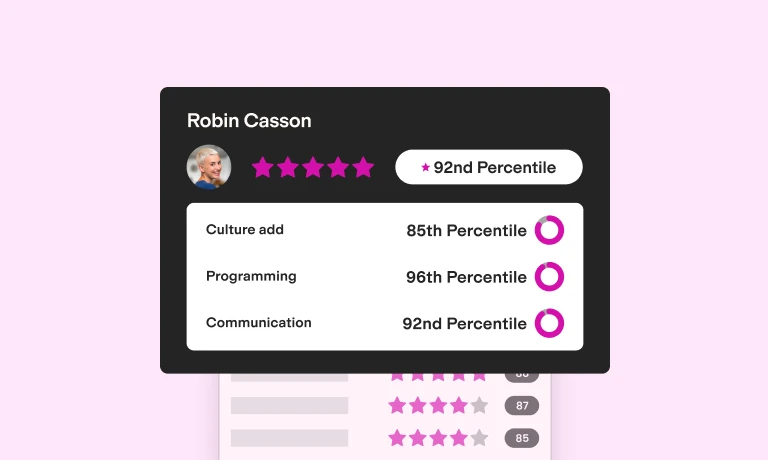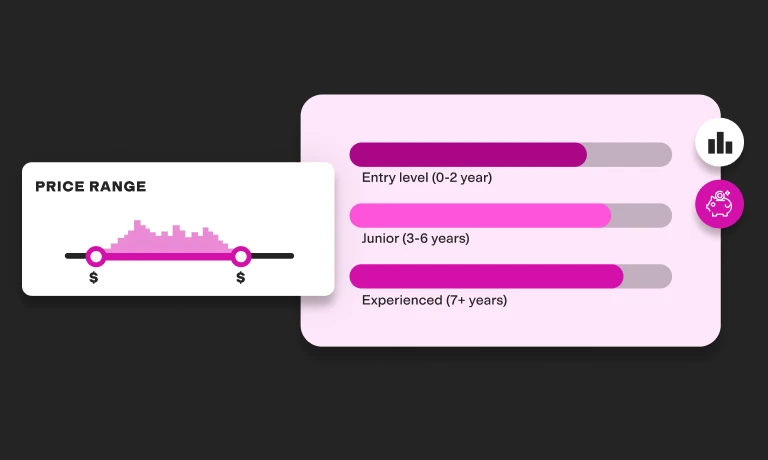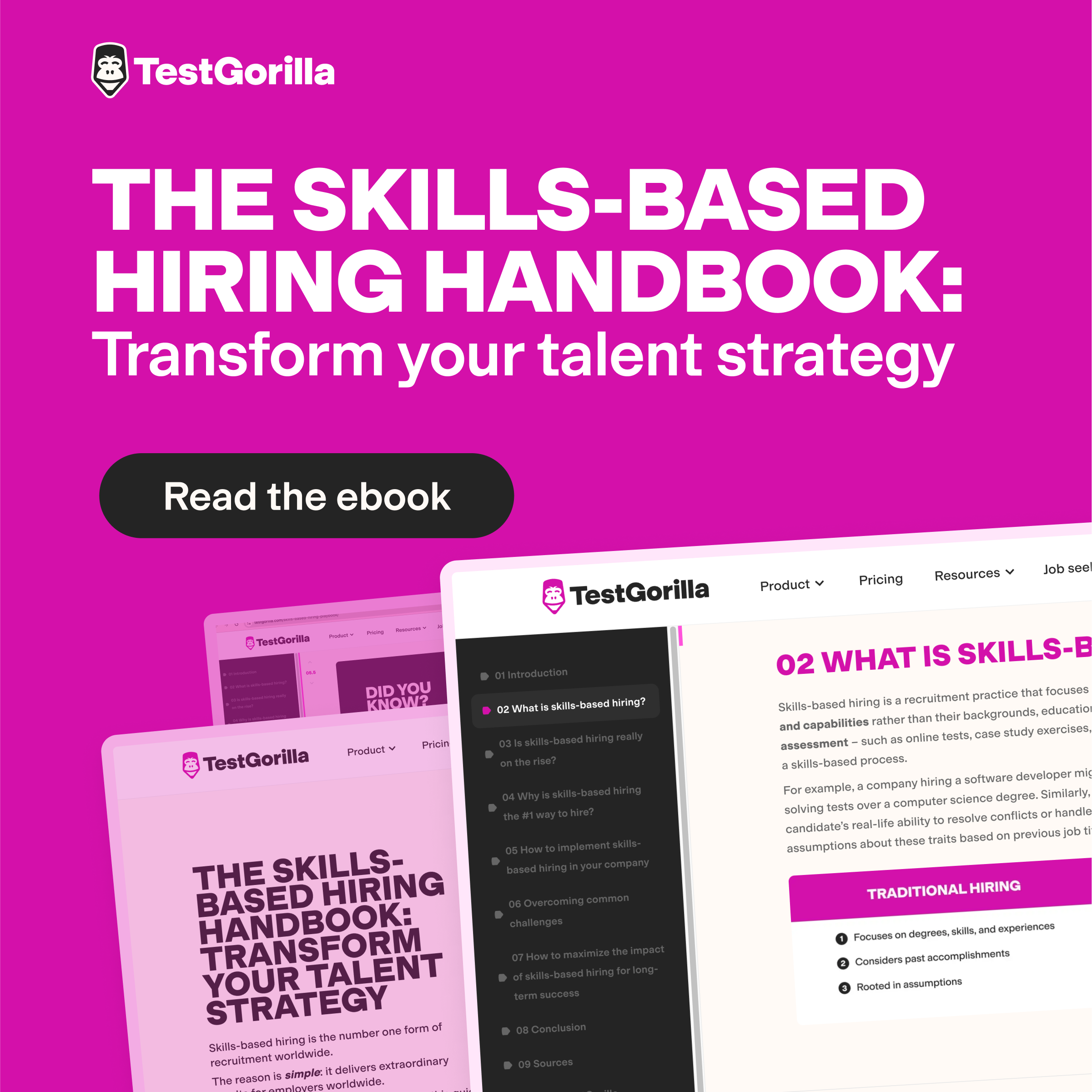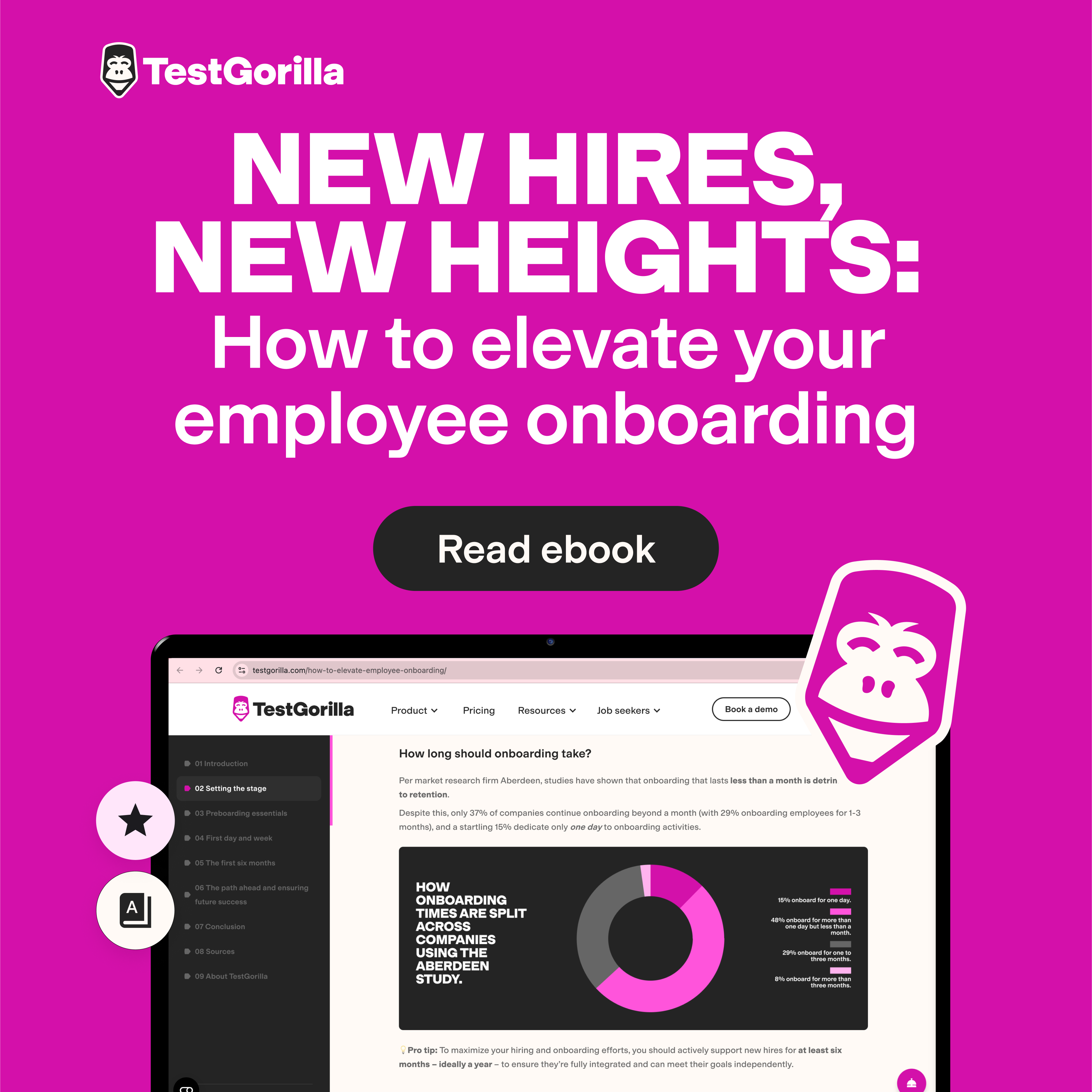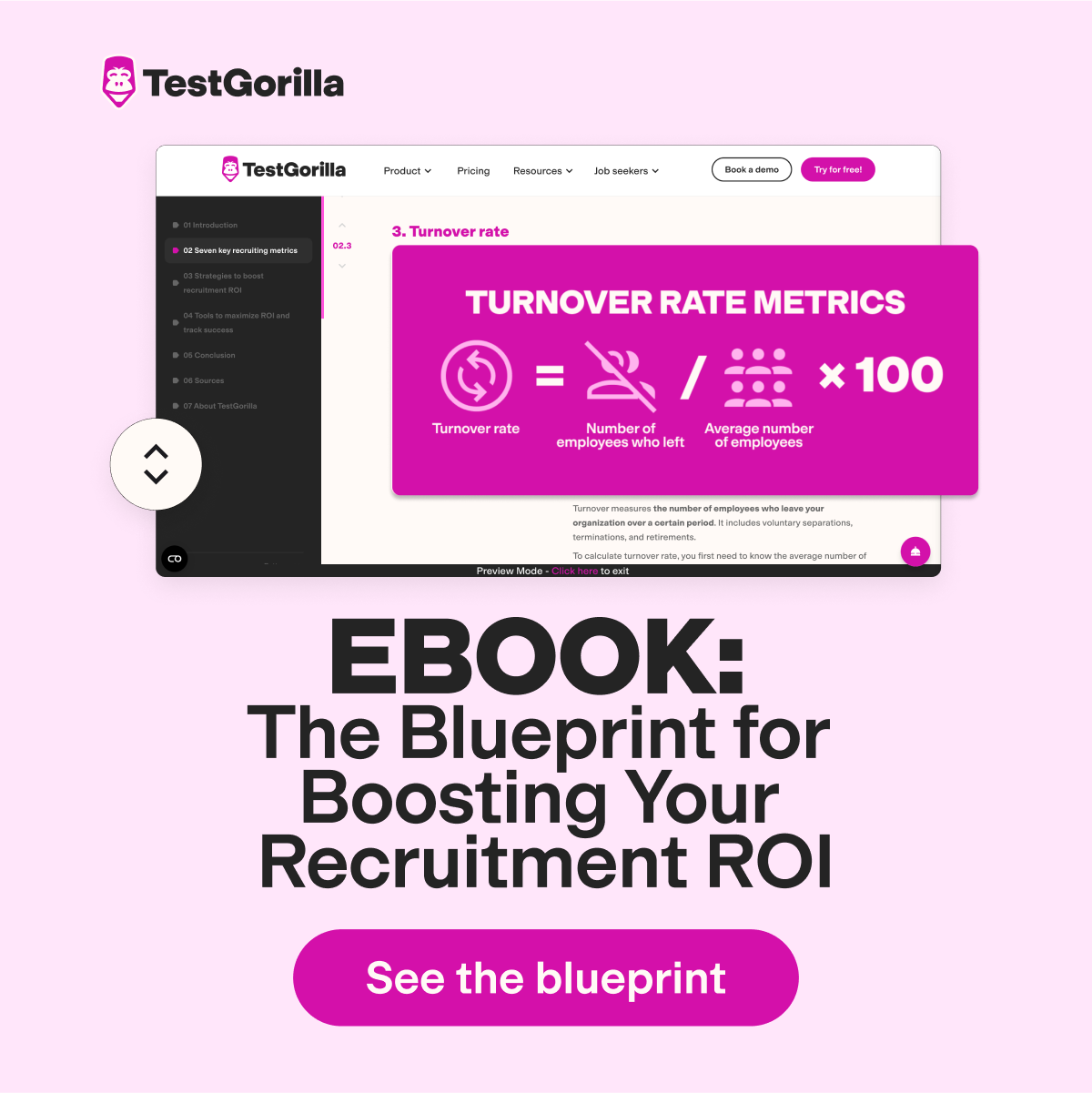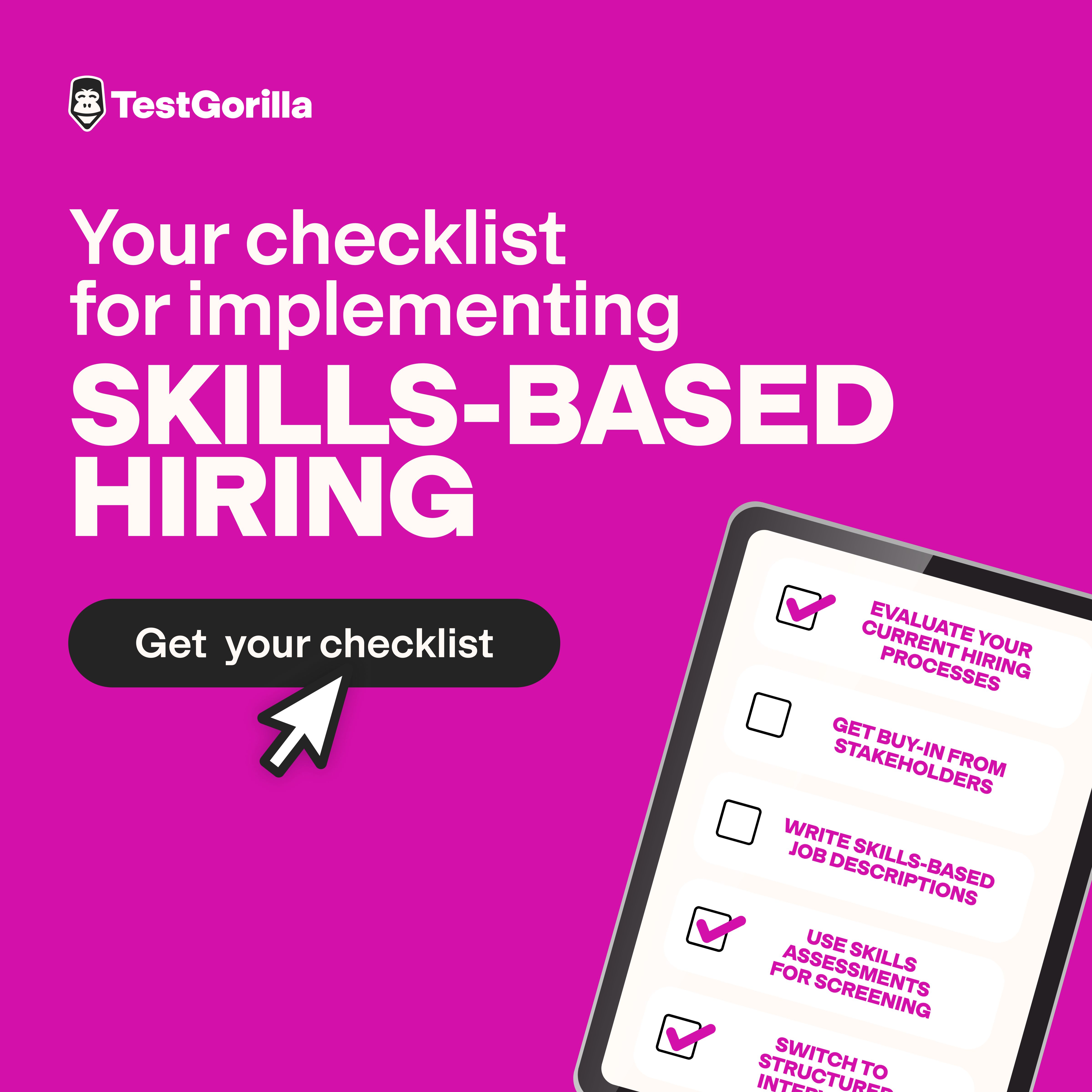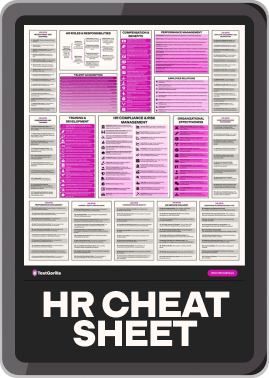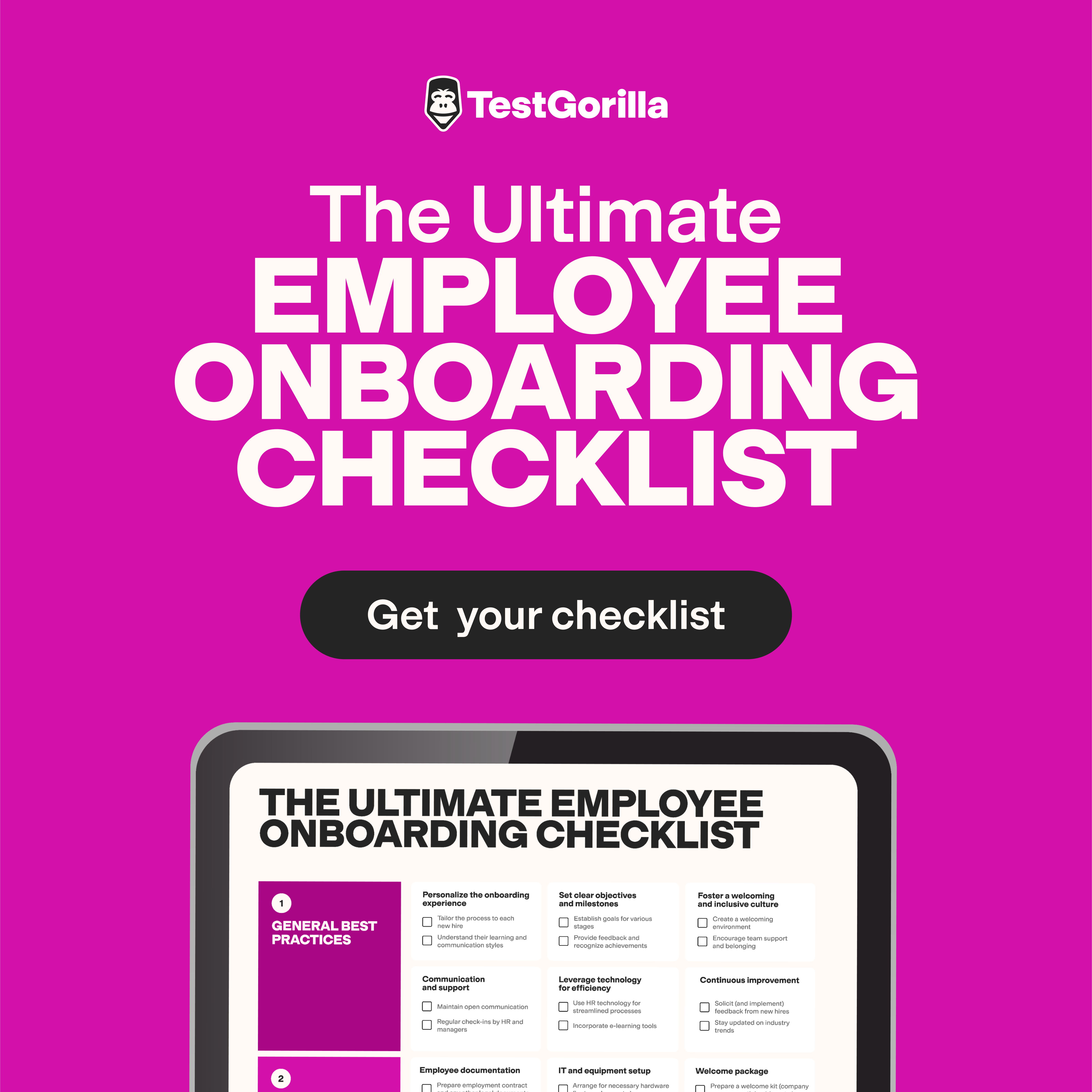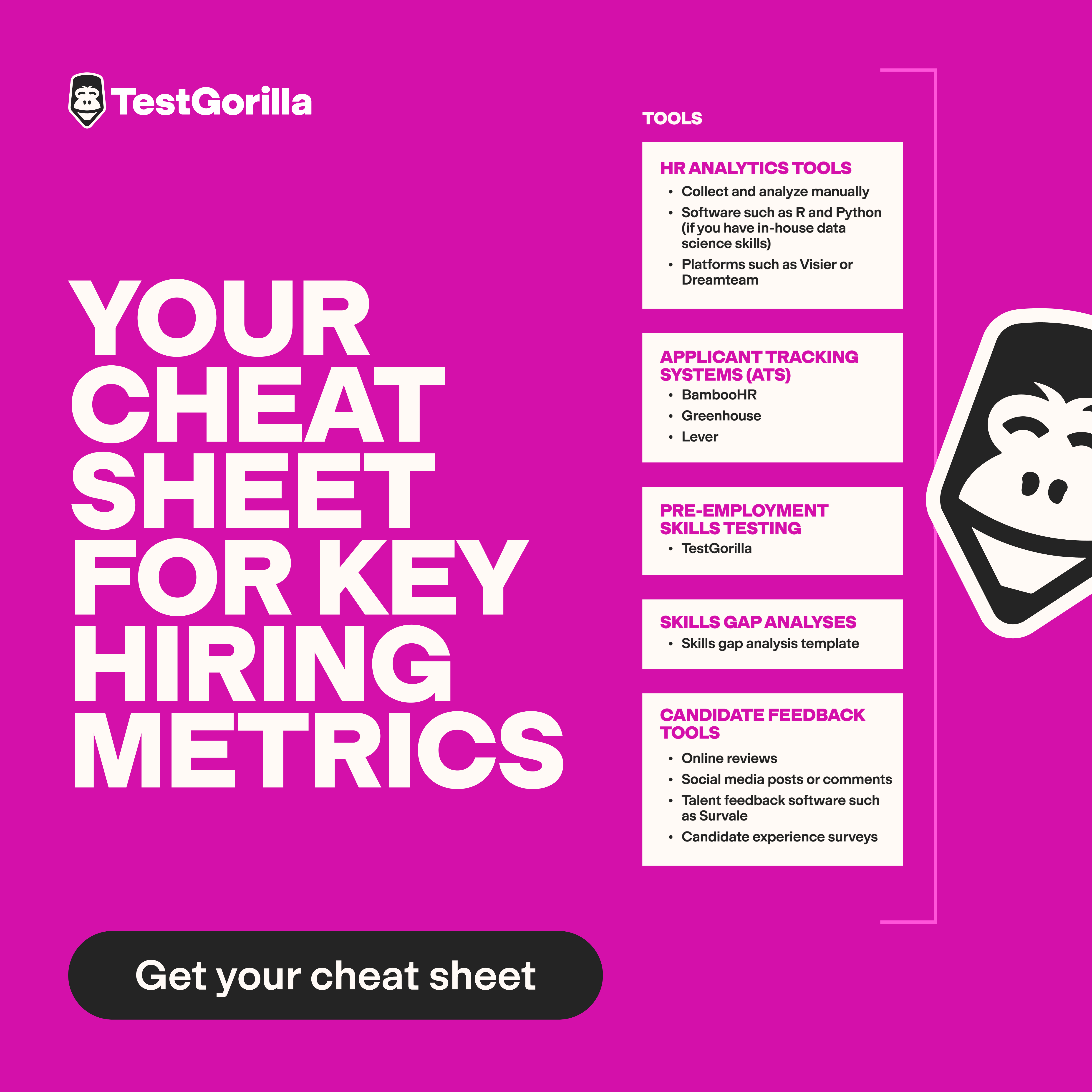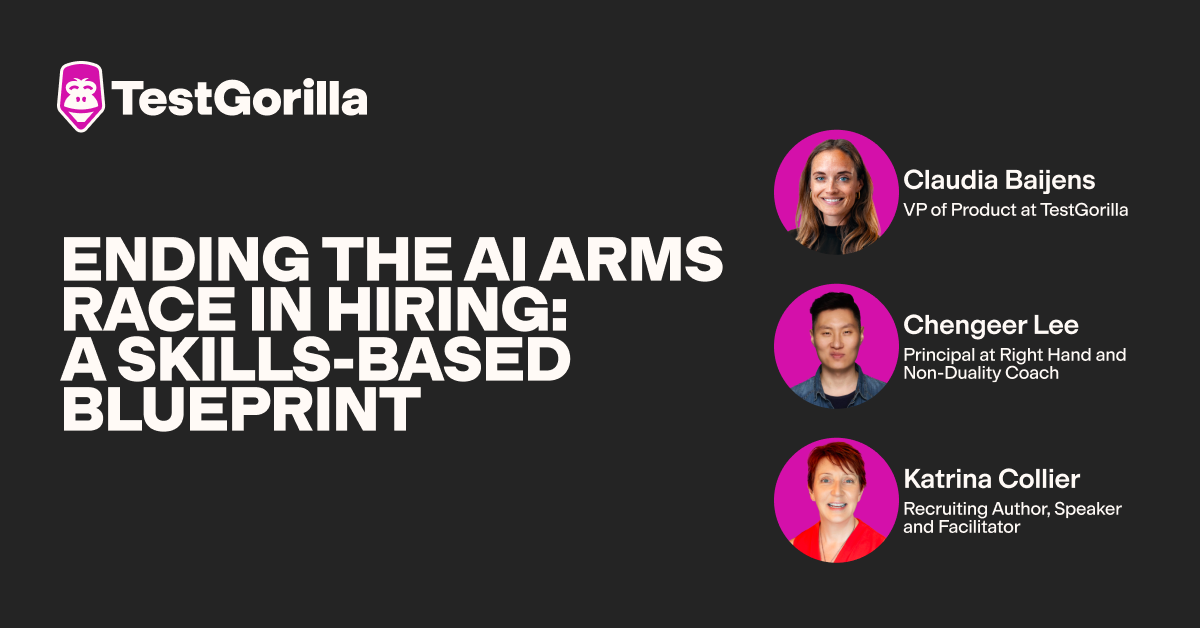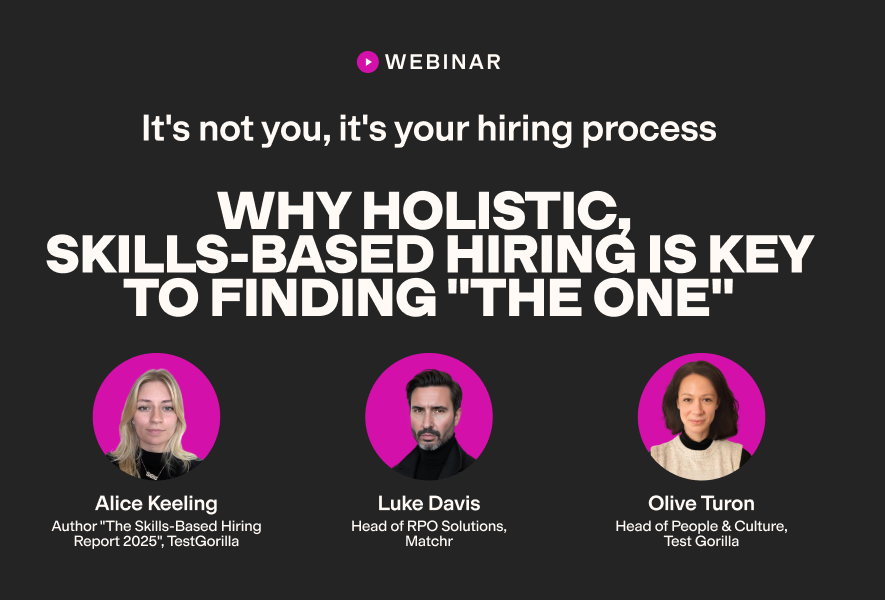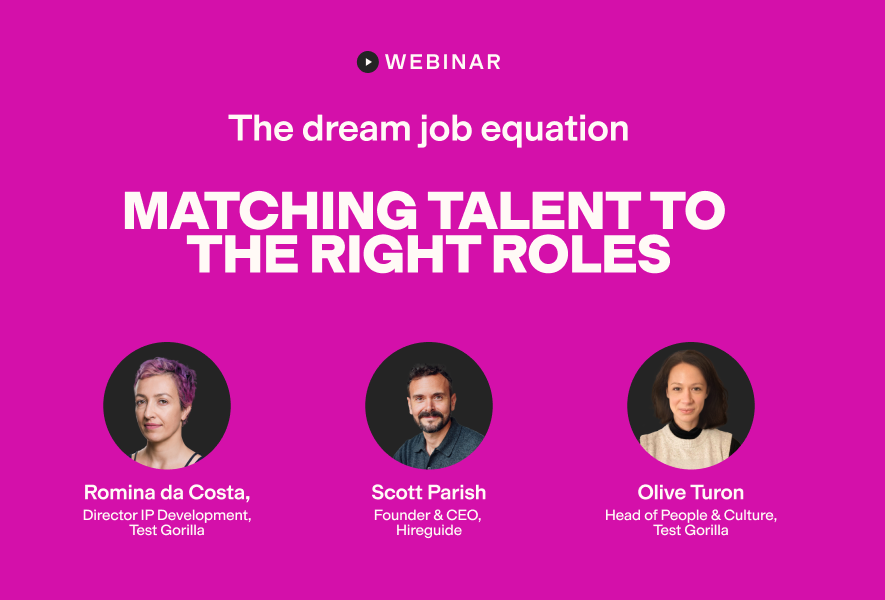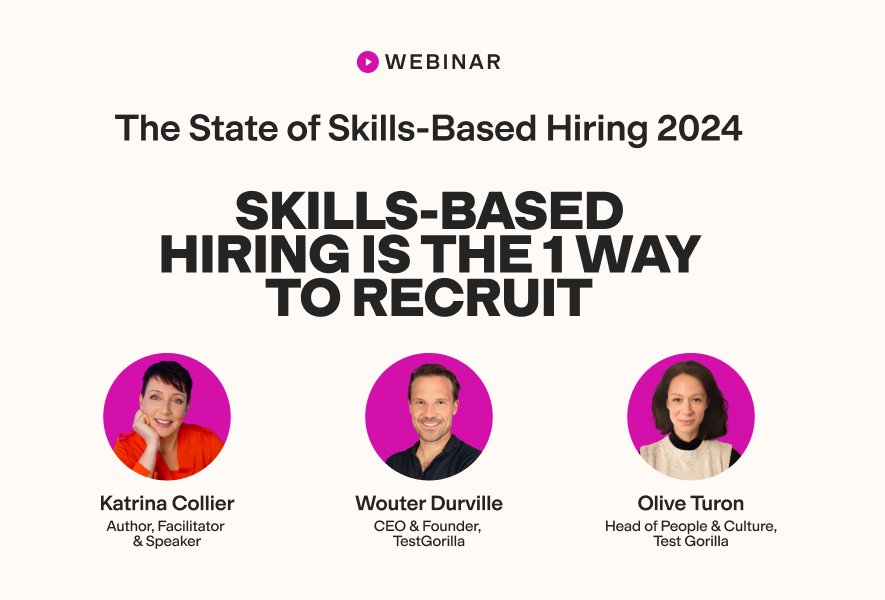How skills-based hiring leads to fewer mis-hires and combats employee churn
Mis-hires and turnover are essential metrics for any HR professional. Hiring an unsuitable candidate after months of searching is detrimental to your company, and losing a current employee can be just as painful.
How can we manage these tricky metrics? This article discusses the detriment of mis-hires and turnover and the part that holistic, skills-based hiring can play in reducing both.
2 in 3 employers say using skills tests in their hiring process has reduced the number of mis-hires in 2025. Source.
Read on to learn how skills-based hiring leads to fewer mis-hires and increases employee retention through matching candidates to ideal jobs and assessing personality values.
Table of contents
Skills-based hiring combats the two biggest issues in HR: Mis-hires and turnover
Mis-hires and turnover are more than disappointing, and they’re a lot more than extra work in your schedule. When these metrics get out of control, it’s a massive detriment to your organization.
One bad hire can have a powerful negative effect on your company, costing thousands of dollars and impacting your current employees.
According to research done by Topgrading, the estimated cost of a bad hire ranges from five to 27 times the amount of the employee’s salary. [1]
Does the price sound pretty steep? That’s because a lot goes into the cost:
Opportunity costs
Recruitment costs
Onboarding and training costs
Negative impact on team performance and team disruption
Lost customers
Negative impact on your employer brand
This bad hire affects more than just money. Mis-hires lead to low morale, damaged client relationships, and unhealthy company culture. These are the unseen costs of a mis-hire.
Mis-hires are unfortunately common – 76% of senior managers admit to recruiting the wrong candidate for a role, and 65% say the negative impact is worse than before the pandemic.
According to one study, these are some of the top reasons that hiring managers make mis-hires:
Candidates lied about their qualifications (33%)
Had a hard time finding qualified candidates (29%)
Didn’t focus on personality and soft skills (29%)
Lacked adequate tools to find the right person (10%) [2]
You can avoid these issues by relying on skills-based hiring practices. Let’s take a look at them:
Problem | Fix |
Candidate lied about their qualifications | Assessing a candidate with skills tests gives accurate, objective results, so you’ll know during the first stages if the candidate exaggerated their qualifications |
Qualified candidates were hard to find | Using skills-based hiring practices expands your talent pool and opens the door for countless more qualified applicants |
Didn’t focus on personality and soft skills | Evaluating candidates’ personalities and soft skills verifies the candidate has the right behaviors and competencies |
Lacked adequate tools to find the right person | Adopting skills-based hiring tools like pre-employment skills tests and an internal talent marketplace helps recruiters source and assess the right talent for the role |
What about employee turnover?
It turns out that these outcomes are directly connected. The fewer mis-hires you make, the fewer people quick quit when they realize the job isn’t for them.
Skills-based hiring helps match a candidate’s skill set and values with the open role, and the better suited a candidate is to a position, the longer they’ll stay and the more satisfied they’ll be. This is especially true when you hire holistically – meaning you measure a candidate's soft skills, cultural alignment and behavioural competencies as well as their technical skills.
Many HR professionals are looking for tools like skills tests to help them manage turnover. The top challenge driving HR technology decisions is finding, attracting, and retaining talent.
Adopting skills-based hiring addresses mis-hires and high turnover by matching applicant skills to an open position to find the best candidate for the role. According to TestGorilla’s State of Skills-Based Hiring report:
Half of employers increase retention when they hire holistically
2 in 3 organizations saw a reduction in mis-hires when they started using skills tests
A separate study found that 78% of HR professionals say the quality of their organization’s hires has improved owing to skills assessments.
This discovery isn’t brand new. A study done in 1984 found that hiring for skills is five times more predictive of job performance than hiring for education and two times more predictive than hiring for work experience.[3] People have known the efficacy of skills-based hiring for years, it’s just now that technology has advanced to the point where we can quickly and accurately evaluate skills.
Need more guidance on implementing skills-based hiring?
Read our complete handbook for all the tips, tools, and strategies you need to get the most out of this transformational approach to recruitment.
How skills-based hiring leads to fewer mis-hires and finds the ideal candidate
We mentioned that skills-based hiring benefits your business. It helps find the ideal candidate and reduces detrimental mis-hires. But how?
Here’s a quick summary. Skills-based hiring:
Assesses skills where traditional methods can’t
Ensures candidates have the right soft skills and personality for the role
Uses structured interviews
1. Assesses skills where traditional methods can’t
Unfortunately, resumes are unreliable at best and provenly less than effective at worst.
Here are a few disappointing facts about resumes:
32% of Americans admit to having lied on their resumes
Higher earners are more likely to lie on their resumes
80% of those who lied got the job, but almost half lost the job eventually when the offer was rescinded
These points not only show that resumes are unreliable, but they also lead to mis-hires and wasted time.
If you’re brave enough, check out our five stories from resume recruiting hell to see how detrimental resume hiring can be (our hearts go out to the hiring managers in those stories).
Resumes also have a lot of potential for unconscious bias, which strikes without you noticing it. CNBC calls resumes a “breeding ground for biases” that can prevent you from hiring the best candidate for the role.
Skills-based hiring bypasses the entire problem with resumes by giving you skills-based data to rely on. This is what a sample assessment for a graphic designer might look like:
Adobe Photoshop for Designers test
Adobe Illustrator test
Communication test
Attention to Detail test
Culture Add test
All of these tests and many more are available in our test library.
There’s no lying about skills or qualifications when your process can accurately and objectively evaluate capabilities. Skills tests help hiring managers find candidates that can get the job done and do it well.
2. Ensures candidates have the right soft skills and personality for the role
A candidate needs more than technical skills for every job role. Soft skills, personality, and culture match are all components of a great hire.
One Leadership IQ report has shown that 89% of mis-hires are due to the wrong soft skills, and our own data found that 78% of employers have hired a candidate with strong technical skills who was not successful in the role due to poor soft skills or a lack of cultural or motivational fit.
It isn’t surprising because soft skills and personality are impossible to assess through traditional hiring methods. A resume could say “great communicator,” but that isn’t exactly a guarantee.
TestGorilla's data found that 72% of employers and 82% of job seekers say considering the whole candidate (including their skills, personality, and cultural alignment or culture add) leads to better hiring decisions and improved organizational outcomes.
Soft skills like emotional stability have been shown to give teams a competitive advantage, and measuring these skills is easier than you think. Personality and culture tests like The Big 5 test enable hiring managers to evaluate a candidate’s emotional intelligence and stability and our Motivation test measures the extent to which a candidate’s expectations align with your offer and role.
3. Uses structured interviews
Skills-based hiring doesn’t end at the skills tests. Structured interviews are a big part of a skills-based hiring process. But what is a structured interview?
Let’s take a look at a quick comparison between structured interviews and unstructured interviews:
Structured interviews | Unstructured interviews |
Questions determined in advancePredetermined success criteriaQuestions asked in the same order for every candidateFocuses on the core competencies for the roleMostly consists of behavioral and situational questionsCan go off-script but always returns | Unfold like a conversationHas general topics to coverNo specific questionsNo specific criteriaNo agreed order |
The predetermined criteria and script mean that structured interviews give a fair chance to every candidate.
Goldman Sachs revamped its hiring processes to include structured interviews. Dane E. Holmes, the global head of human capital management, says the result is a fairer, more inclusive process and the firm’s most diverse entry-level class.
But it’s more than that: Structured interviews are also a better performance indicator. Structured interviews predict 26% of job performance, whereas unstructured interviews predict only 14%. That’s why Google stopped using them.[4]
These interviews focus on specific role-relevant questions and stay on track, enabling you to evaluate candidate skills and capabilities more effectively and improve the quality of your hires.
The best insights on HR and recruitment, delivered to your inbox.
Biweekly updates. No spam. Unsubscribe any time.
How skills-based hiring reduces turnover and increases retention
Turnover and mis-hires are directly connected, so it makes sense that better hires naturally increase retention. But skills-based hiring also actively contributes to increased retention.
Here’s a quick summary. Skills-based hiring
Matches candidates’ skill sets to roles
Aligns candidates to company culture
Creates a healthy, inclusive culture
Prioritizes learning and development
1. Matches candidates’ skill sets to roles
Happy employees are more likely to stay at their companies. According to our data, 65% of employers agree that employees hires using skills tests stay longer in the role. Furthermore, most candidates say they prefer a skills-based hiring process – especially younger generations.
Why are candidates hired through skills-based hiring happier?
Candidates are objectively assessed during hiring, which means their skill sets match their new roles. Matching skills mean that candidates have the right skills to complete their responsibilities smoothly. And when employees are confident and comfortable, they’re more satisfied.
A study in a customer service call center found giving their reps the right skills to handle new tasks and resolve more customer complaints on their own improved both wellbeing and job performance. [5]
In a skills-based environment, employees use their skills and are recognized and valued for them. This focus on capabilities over background and pedigree creates a healthier environment and improves employee satisfaction.
It’s also worth noting that employees without traditional higher education tend to stay 34% longer with companies than their counterparts. [6] If you're focussing on skills over degrees, everyone wins.
2. Aligns candidates to company culture
Culture is a factor in hiring, although too many companies still rely on the archaic practice of “culture fit.” Culture add, or alignment, is the way forward.
Culture fit strongly emphasizes “fitting” a candidate into a pre-established, rigid culture. If the candidate doesn’t fit the specific criteria, they get a rejection. For example, a 2021 study found that only 15% of hiring managers across seven countries believed that workers older than 45 applying for an entry-level position were a “fit.”
On the other hand, culture add compares how a candidate’s values align with the organization’s values and adds similar yet unique individuals to your company. You can achieve culture add using our Culture Add test.
This practice nurtures a healthy culture where employees feel like they belong and employees stay longer in a culture they identify with. Values are important, and when your beliefs and goals match your company’s, it leads to long-term relationships, increased retention, and even more applications.
Strong values alignment also makes employees less likely to be swayed by outside offers. For more info, explore our guide on the great talent heist and see how culture-driven retention strategies can deter poaching.
3. Creates a healthy, inclusive culture
Another point linked to culture: Skills-based hiring cultivates a positive company culture where employees feel safe and accepted.
Toxic company culture is one of the largest contributors to high turnover. MIT Sloan found that a toxic organizational culture is the greatest driver of attrition and is 10.4 times more likely to contribute to turnover than compensation issues.
How does skills-based hiring help? Destaney Wishon, the founder and chief executive officer of BetterAMS, says in his post that you can teach skills but the damage a toxic employee can do to your culture could be irreparable. Hiring employees with personality tests, such as the DISC test, assesses factors like conscientiousness and empathy. Assessing personality traits means you hire more positive candidates and fewer toxic ones.
Employees stay at a company when they feel they can make mistakes, ask questions, and learn. When they feel one wrong move will put them on the chopping block, it raises tension and eventually leads to walking out the door.
For more information on this subject, read our guide on psychological safety in the workplace.
It’s all well and good to say these things, but does skills-based hiring create an inclusive culture and contribute to employee wellbeing, or is this an empty claim?
We have our example in John Kim, one of our awesome sales team members.
John left TestGorilla to pursue other opportunities: a great job with good compensation and tasks he could handle. But he soon realized that he missed TestGorilla’s inclusive culture.
“There was nothing wrong with my new job, but it was lonely. I had no one to laugh with, no one to vent to. I missed the company culture, and so I came back.”
To read John’s full story, check out our 10 stories that show the power of skills-based hiring.
4. Prioritizes learning and development
Lack of career development directly affects turnover. One study found that 70% of employees who get a promotion within three years stay with their employer, compared with just 45% of those who didn’t get a promotion. A separate report found that 94% would stay longer at a company that invests in their learning.
Skills-based organizations prioritize professional growth and development. Continuous improvement is a cornerstone of skills-based practices. They prioritize the upskilling and reskilling of their people, provide learning opportunities, focus on feedback and mentoring, and offer support wherever they can.
A focus on learning and development can also expand your talent pool to candidates with most of the requirements for the role but not all. These candidates can expand on their skills with upskilling, even if they’re missing a few qualifications.
Use skills-based practices to hire and retain the best talent
Mis-hires and high turnover can be scary metrics, but with the right strategies, you can secure the best talent and keep it in the long term.
Skills-based hiring leads to fewer mis-hires and reduced turnover through hiring the best candidate for the role and letting them use their skill sets for a job they love. And if they’re in a suitable job they do well, they’re going to stay.
If you’d like to start nurturing a healthy organizational culture, check out our Culture Add test to hire candidates that identify with your company.
Sources
“The High Costs of Mis-Hires Are Higher Than You Think”. (June 25, 2019). TopGrading. Retrieved April 21, 2023. https://topgrading.com/resources/blog/the-high-costs-of-mis-hires-are-higher-than-you-think/
“Nearly Three in Four Employers Affected by a Bad Hire, According to a Recent CareerBuilder Survey”. (December 7, 2017). Career Builder. Retrieved April 21, 2023. https://press.careerbuilder.com/2017-12-07-Nearly-Three-in-Four-Employers-Affected-by-a-Bad-Hire-According-to-a-Recent-CareerBuilder-Survey
Hunter, John E; Hunter, Ronda F. (June 30, 1984). “Validity and Utility of Alternative Predictors of Job Performance”. SciSpace. Retrieved April 21, 2023. https://typeset.io/papers/validity-and-utility-of-alternative-predictors-of-job-4am9glr47g
Bock, Laszlo. (April 7, 2015). “Here’s Google’s Secret to Hiring the Best People”. Wired. Retrieved April 21, 2023. https://www.wired.com/2015/04/hire-like-google/
Holman, David; Axtell, Carolyn. (December 7, 2015). “Can job redesign interventions influence a broad range of employee outcomes by changing multiple job characteristics? A quasi-experimental study”. PubMed. Retrieved April 21, 2023. https://pubmed.ncbi.nlm.nih.gov/26641482/
Santhosh, Gopika Maya; Lewis, Greg. (February 22, 2021). “Why Skills-Based Hiring Starts with Your Job Descriptions”. LinkedIn Talent Blog. Retrieved April 21, 2023. https://www.linkedin.com/business/talent/blog/talent-strategy/why-skills-based-hiring-starts-with-job-descriptions
You've scrolled this far
Why not try TestGorilla for free, and see what happens when you put skills first.



